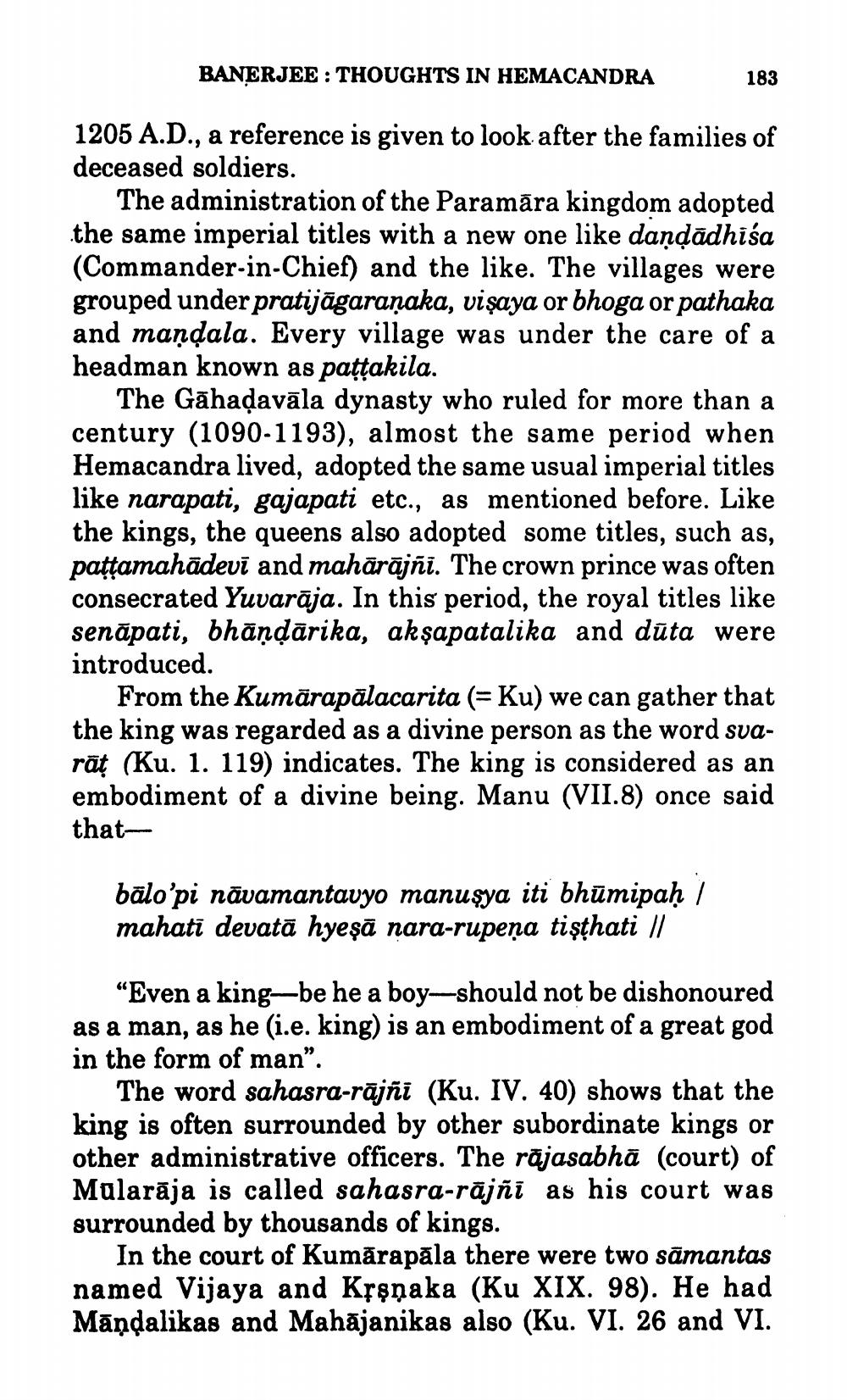________________
BANERJEE : THOUGHTS IN HEMACANDRA
183
1205 A.D., a reference is given to look after the families of deceased soldiers.
The administration of the Paramāra kingdom adopted the same imperial titles with a new one like danơādhisa (Commander-in-Chief) and the like. The villages were grouped under pratijāgaraņaka, vișaya or bhoga or pathaka and mandala. Every village was under the care of a headman known as pattakila.
The Gāhadavāla dynasty who ruled for more than a century (1090-1193), almost the same period when Hemacandra lived, adopted the same usual imperial titles like narapati, gajapati etc., as mentioned before. Like the kings, the queens also adopted some titles, such as, pattamahādevī and mahārājñi. The crown prince was often consecrated Yuvarāja. In this period, the royal titles like senāpati, bhāņdārika, akşapatalika and dūta were introduced.
From the Kumārapālacarita (= Ku) we can gather that the king was regarded as a divine person as the word svarāt (Ku. 1. 119) indicates. The king is considered as an embodiment of a divine being. Manu (VII.8) once said that
bālo'pi nāvamantavyo manuşya iti bhūmipaḥ / mahatī devatā hyeşā nara-rupena tişthati //
“Even a king—be he a boy—should not be dishonoured as a man, as he (i.e. king) is an embodiment of a great god in the form of man”.
The word sahasra-rājñi (Ku. IV. 40) shows that the king is often surrounded by other subordinate kings or other administrative officers. The rājasabhā (court) of Malarāja is called sahasra-rājñī as his court was surrounded by thousands of kings.
In the court of Kumārapāla there were two sāmantas named Vijaya and Kroņaka (Ku XIX. 98). He had Māndalikas and Mahājanikas also (Ku. VI. 26 and VI.




